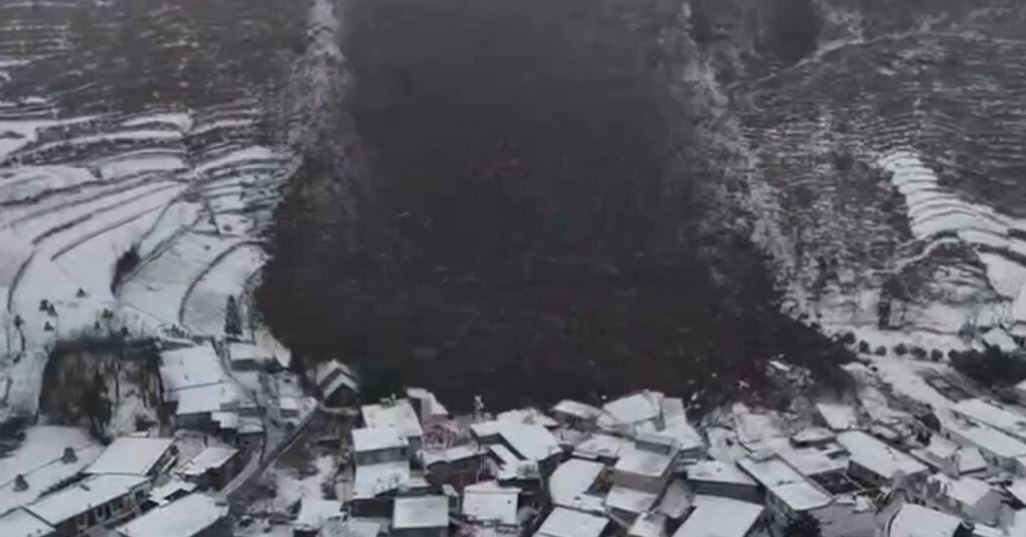A landslide occurred on Monday in Yunnan Province, southwestern China, resulting in at least two fatalities and 45 people buried under the debris, according to reports from Chinese state media. The incident was exacerbated by a cold wave that has swept across the country, leading to evacuations of more than 500 people. Aerial footage from China Central Television revealed the devastating impact of the landslide, with a significant furrow carved into a snowy mountainside, affecting terraced fields and residential areas.
The landslide struck two small villages, Hexing and Heping, near the borders of Sichuan and Guizhou Provinces, in the northernmost part of Yunnan. The affected area is mountainous and was historically one of the poorest regions in China. The villages are sparsely populated, adding complexity to rescue efforts. Hundreds of workers are currently navigating snow-covered debris to locate and rescue the missing residents, who belong to at least 18 different households.
The incident occurred shortly before 6 a.m. local time, and the harsh winter conditions, with temperatures below freezing and ongoing snowfall, have posed additional challenges for the rescue operations. The National Meteorological Center in China reported a sharp drop in temperatures across the country over the weekend, anticipating blizzards in southeastern China on Monday. The adverse weather conditions led to the cancellation of some trains in the affected region.
The cause of the landslide and its potential connection to the cold wave remain unclear. Yunnan’s climate is typically subtropical, with an average January temperature of around 36 degrees Fahrenheit. Investigations will likely be conducted to determine the factors contributing to the landslide and the impact of the unusual weather patterns in the region.
The tragedy highlights the vulnerability of mountainous areas to natural disasters, especially when compounded by extreme weather conditions. Rescue efforts are ongoing, emphasizing the urgency of addressing both immediate response needs and long-term measures to mitigate the impact of such events in vulnerable regions.
